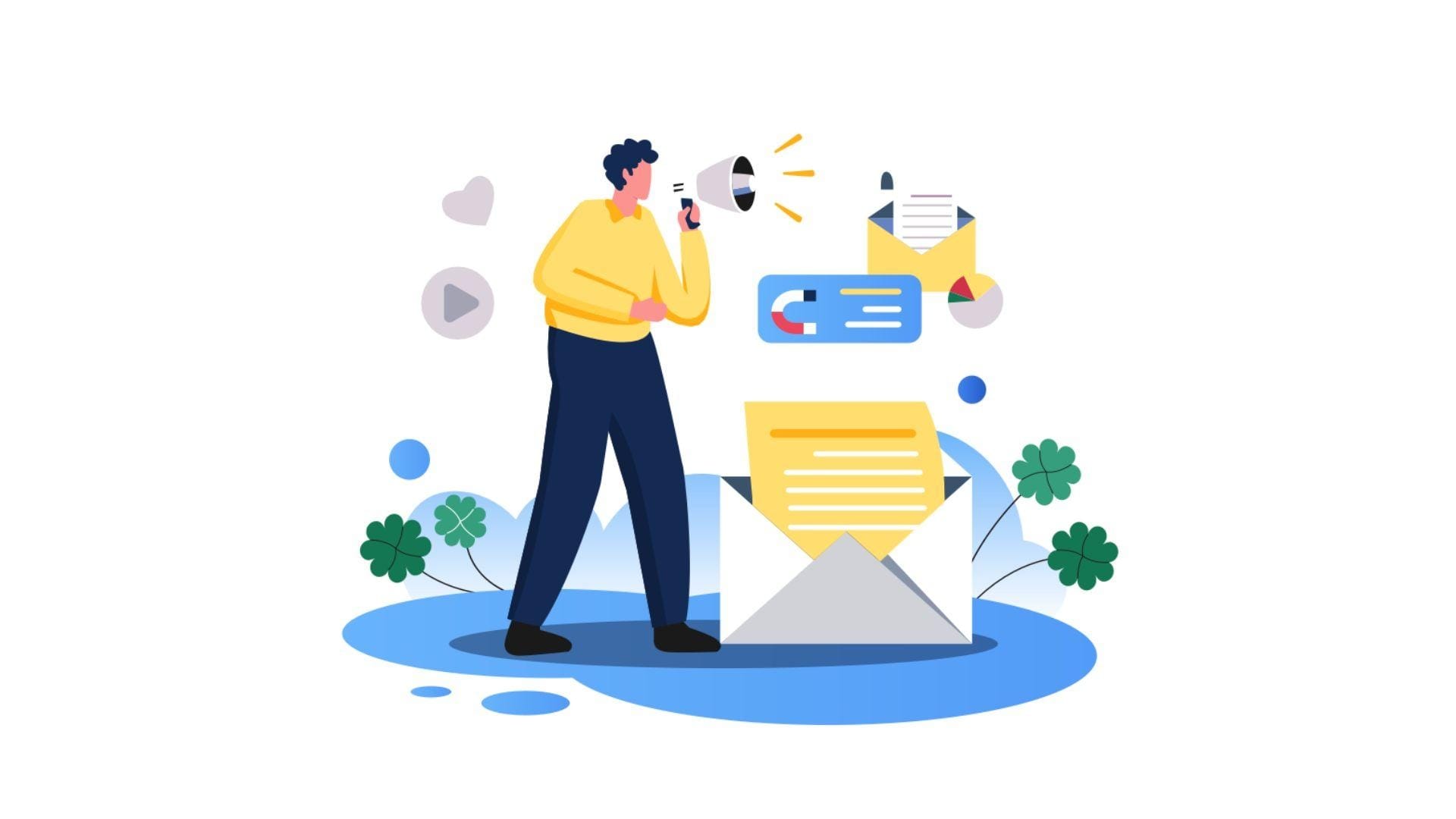Better Email Engagement: The Ultimate Guide
Boost email engagement with personalization, A/B testing, and key metrics. Optimize strategies for better results now!

Are your email campaigns falling flat? Despite having a list of subscribers, do you struggle with low open rates, poor engagement, or high unsubscribe rates? You're not alone. Many businesses face these challenges, but the good news is that with the right strategies, you can turn things around.
In this ultimate guide, we’ll dive into the most common email engagement obstacles and provide you with practical solutions to boost your results, build stronger relationships with your audience, and elevate your email marketing to new heights.
What is Email Engagement?
In short Email engagement is how recipients interact with the content of your emails. It encompasses various actions, including opening the email, clicking on links, forwarding the email message, and taking the desired action (e.g., making a purchase). Engagement is a clear indicator of how well your email marketing is resounding with your audience.
Levels of Engagement
There are different levels of email engagement that can help you evaluate the effectiveness of your campaigns:
- High Engagement: Frequent opens, clicks, conversions, and positive interactions.
- Moderate Engagement: Occasional opens and clicks but limited further actions.
- Low Engagement: Few opens or clicks, low email conversion rates, and high unsubscribe rates.
As a general rule, the more engaged your recipients are, the more likely they are to convert and continue interacting with your brand.
Before diving into strategies to boost engagement, it's important to understand the key metrics that measure the effectiveness of your email campaigns.
Metrics for Calculating Email Engagement
You need to track several important key performance indicators to calculate and improve email engagement. These will give you insights into how your audience interacts with your emails and where improvements can be made.
- Email Open Rates
The email open rate exhibits the percentage of recipients who open your email. A low open rate could indicate an uninspiring email subject line or poor list segmentation.
- Click-Through Rates and Click-to-Open Rates
Click-through rate (CTR) known as to the percentage of recipients clicking links within your email. The click-to-open rate (CTOR) tells you how effective your email content is at encouraging further engagement after the email is opened.
- Read, Skim, Delete Rates
Tracking how recipients interact with your emails once opened is crucial. If most people are skimming or deleting the email without clicking, your content may need refinement.
- Unsubscribe Rates
A high unsubscribe rate is a red flag. It means your audience is disengaging with your emails. If this happens, revisit your content and delivery strategy.
- Conversion Rates
Ultimately, your email engagement should drive conversions, whether a sale, a demo sign-up, or any other action you desire. Monitoring this metric will show you how effective your emails are at moving recipients down the sales funnel.
- Forwarding/Sharing Rates
When recipients forward your email to others, it’s a sign that your content is valuable. Tracking this helps you understand the broader reach of your email campaigns.
Now that we understand the key metrics for calculating email engagement, let's dive into some advanced strategies that can help you boost these numbers.
As we look towards improving email engagement, it's essential to recognize the common challenges that marketers face in this process.
What are the EmailCurious how AI is redefining sales roles? Learn more in our breakdown of what is AI SDR and how it's changing outbound forever. Engagement Challenges?
The challenge lies in the saturated nature of the inbox. For 59% of enterprise marketers, increasing engagement is one of the greatest barriers to the success of their email program, and nearly half (47%) report that measuring performance is a top challenge.
Standing out requires more than just sending emails—it requires crafting messages that capture attention, have personal touch, deliver value, and resonate with your audience.
Source: Link
- Deliverability Issues
Emails may fail to reach the inbox due to deliverability issues, where they end up in spam or junk folders. This can be caused by poor sender reputation, technical issues, or using language or practices that trigger spam filters.
- Mobile Optimization
With an increasing number of people checking emails on mobile devices, it’s crucial to ensure that emails are designed to be mobile-friendly. If emails aren’t optimized for mobile devices, they may appear distorted or difficult to navigate, leading to unsubscribes.
- Unengaged Subscribers
Over time, some subscribers may become disengaged, resulting in lower click-through rates or even unsubscribes. This may be due to irrelevant content or too many emails sent to the recipient.
- Content Relevance and Personalization
Sending generic emails can alienate subscribers who expect relevant and personalized content. Subscribers are more likely to engage with emails that cater to their interests, purchase history, or past interactions with the brand.
- Timing and Frequency
Striking the right balance when it comes to email frequency and timing can be tricky. Too many emails can overwhelm or annoy subscribers, while too few can lead to disengagement and a lack of brand recognition.
The key to overcoming these challenges is to refine your email strategy and continuously test new tactics to see what works best for your audience.
Let’s move ahead to look at the strategies that will boost your email engagement.
Strategies to Drive Higher Email Engagement
To effectively engage your audience, it's important to implement strategies that capture attention and encourage interaction. Here are 8 tactics to help you increase email engagement and drive better results.
Start with Your Subject Line
Your subject line is the first thing recipients look into, so it needs to stand out in their crowded inbox and grab their attention immediately. Pair this with a compelling preheader text as a secondary preview. This combination is crucial for enticing recipients to open the email.
Example: Instead of a generic "Monthly Newsletter," try something more intriguing like "Exclusive Insights & Offers Just for You!"
Craft Quality Personalized Content and Images
People engage with emails that feel personalized and relevant to them. Use dynamic content that adapts based on user behavior and preferences. Similarly, include high-quality images relevant to the email content and ensure the email is visually appealing.
Optimize Content for Mobile and Incorporate Social Proof
With more than 50% of emails being opened on mobile devices, it's essential to optimize for mobile responsiveness. Use single-column layouts, large buttons, and concise copy. Including social proof, such as testimonials or user-generated content, also helps build trust and drive engagement.
Experiment with Engaging Content Types
Mix up your content to keep your audience intact. Try adding interactive elements, like quizzes, polls, or videos, to encourage clicks and interaction. Engaging content types help break the monotony and can drastically improve your CTR.
- Gamification and Rewards
Integrating gamification into your emails can be a fun way to engage your audience. For example, offering rewards or prizes based on interactions with your email can create excitement and encourage further engagement.
Use Clear and Compelling Call-to-Actions (CTAs)
A strong CTA guides recipients on what action to take next. Ensure your CTA is clear, concise, and visually appealing. Experiment with different wording, designs, and placements to see what works best for your audience.
Re-engagement Campaigns
If your email list includes inactive subscribers, a re-engagement campaign can bring them back into the fold. Send targeted messages offering exclusive content or incentives to encourage them to engage once again.
Timing is Key
Send emails at times when your audience is most likely to engage. Experiment with different times and days to find the optimal sending schedule. This could vary depending on your audience and industry.
Analyze and Optimize Your Campaigns
Regularly review your email performance metrics like open rates, click-through rates, and conversions. Use this data to continually refine your content, design, and strategy to better engage your audience.
To see these strategies in action, let’s explore a real-world case study that highlights successful email engagement techniques.
A Case Study: Real-World Examples of Successful Email Engagement Strategies
Let’s see how Floworks has helped a client optimize their sales processes and improve email engagement.
Case Study: How Alisha Helped Unscript Achieve a 40% Conversion Boost
The Challenge: Ignite Conversations, Fuel Conversions
Unscrypt faced poor engagement with generic outreach emails. The typical open rate for their emails was a mere 10%, and their reply rates were even lower. They needed a way to make their outreach more engaging.
The Solution: Hyper-Personalized, AI-Driven Outreach
Floworks' AI-powered tool Alisha helped Unscrypt move from generic templates to hyper-personalized emails. The system used data to tailor messages that resonated with each prospect, boosting engagement.
Key Features:
- Personalized Emails: Created one-on-one messages based on the prospect's unique profile.
- Timely Follow-Ups: Automated follow-ups kept conversations alive.
- Lead Nurturing: Provided relevant content to guide leads through the sales funnel.
Results:
- 40% Increase in Conversion Rates: Higher engagement and conversions with tailored messaging.
- Seamless CRM Integration: All interactions were automatically logged, helping sales teams stay organized and focused.
Conclusion
Driving email engagement requires a thoughtful approach that combines personalization, relevant content, and strategic timing. By implementing the right strategies and continually optimizing your campaigns, you can significantly boost interaction and build stronger relationships with your audience. Stay consistent, measure your success, and adapt to stay ahead in the field of email marketing.
Floworks offers a powerful tool, Alisha that can help your sales team to automate lead tracking, create personalized outreach, and streamline communication. With Alisha, sales leaders can increase efficiency, reduce costs, and achieve better results, turning their sales dreams into reality.
FAQs
- What is a good email engagement rate?
A good email engagement rate typically ranges between 15-25% for open rates and 2-5% for click-through rates. This varies by industry and list quality. Higher rates indicate strong subject lines and valuable content. Consistent engagement helps improve overall email performance.
- What are the best times for email engagement?
Studies suggest sending emails midweek (Tuesday to Thursday) around 10 AM or 1 PM works best. However, optimal times can vary based on audience behavior and demographics. Test different times to discover what works for your subscribers. Always analyze data for consistent trends.
- What is the engagement score in email marketing?
The engagement score is a measure combining metrics like open rates, click-through rates, and replies. It evaluates how actively subscribers interact with your emails. A high score means recipients find your content relevant. Tools like CRM platforms often calculate this automatically.
- How do I track my email engagement?
Use tools like Google Analytics, ESP dashboards, or CRM software to track open rates, click-through rates, and conversions. Monitor metrics like bounce rates and unsubscribes to spot issues. Segmentation and A/B testing help refine engagement tracking. Regularly review and optimize email campaigns.


